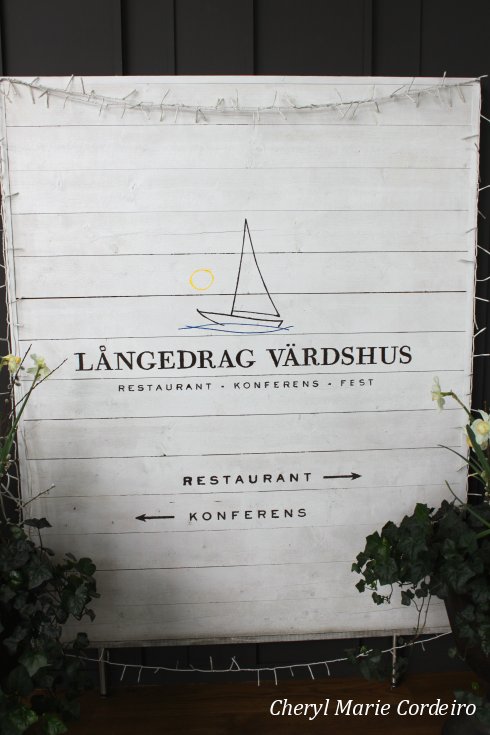
Beautiful dining even on a grey day…Långedrag Värdshus, Talattagatan, Gothenburg, Sweden.
Photo: C M Cordeiro-Nilsson © 2011
There’s something about lunch dining in the middle of a busy week at Långedrag Värdshus that puts a spring in your step regardless of the weather or the agenda for the day you have to deal with.
The location is one of the most significant in the history of the industrialized Gothenburg, being the location of the most famous of all pleasure sailing societies of the late 19th century where the rich burghers sought to gain some of the sun and fresh air that was not found inside of their dark, stale city offices.
The idyllic seaside location of the restaurant and the meandering drive from the city center of Gothenburg, out to the tip of land that connects land with the southern archipelago, literally relaxes both spirit and mind. Greeted by sea breeze on your cheeks as soon as you’re out of the car, the smell of the sea, warm coloured wooden panels of the building and billowing white and cream coloured chiffon curtains, for a brief hour or so, you’re transported to a Nordic Tiamo and can disconnect from your hectic day’s schedule. Here, you can mentally cast loose and set sail out in the open sea, trading in your daily chores towards the fierce competition of a sailing regatta of days gone by.
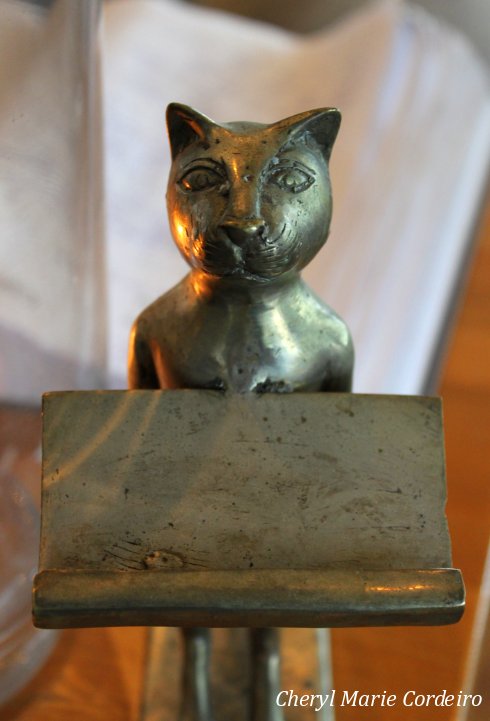
A bronze card holder greets you in the entrance with a nod towards the Maneki Neko lucky cat.
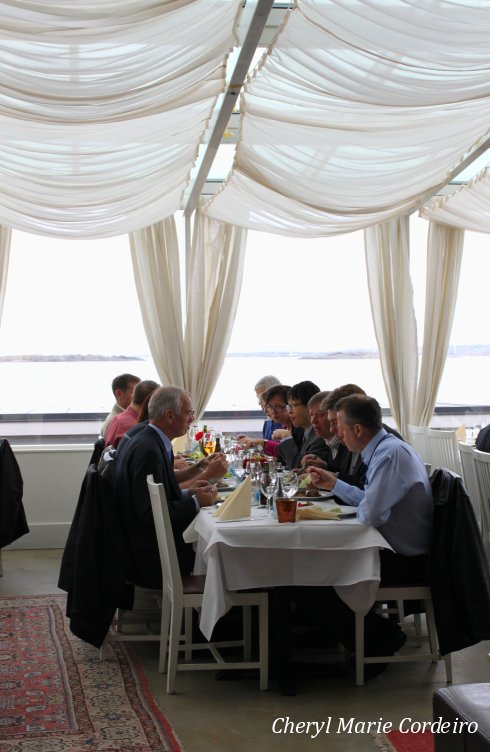
The canopy of chiffon curtains calls to mind the billowing sails of boats outside.
Scandinavian interior design and architecture as reflected in the Biotech Center by “Liljewall arkitekter”, has an incredible sense of lightness in being – and yes, that is a specific reference to Frank Wilczek’s work too, which takes you on a journey of fundamental physics. Perhaps it’s the long winter nights, the long cast purple-orange dusks of autumn the northern hemisphere offers that Scandinavian design overlays empty spaces with more… empty space. Following Wilczek (2008)…because empty spaces often reveals itself to our minds as a context full of spontaneous activity, Scandinavian design is inherently what I would describe as cozy minimalism. By its lack of rules while being strictly regulated, it encourages both discipline and free thinking within the open room created by light, glass, wood, light pastels and billowing sails.
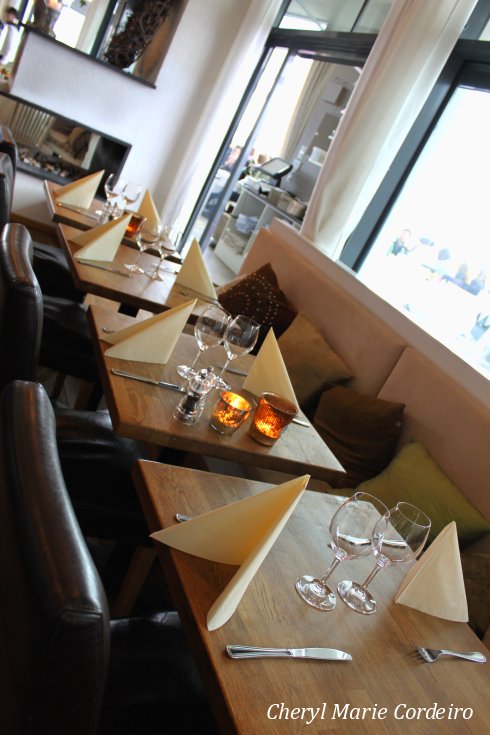
Table set with the orange glow of tea lights.
Making way for extemporaneous activities, perhaps also as a means of managing multiple split-second happenings, Scandinavian design or specifically, modern Swedish architecture and interior design often give room as it were, to manage mis-happenings as well.
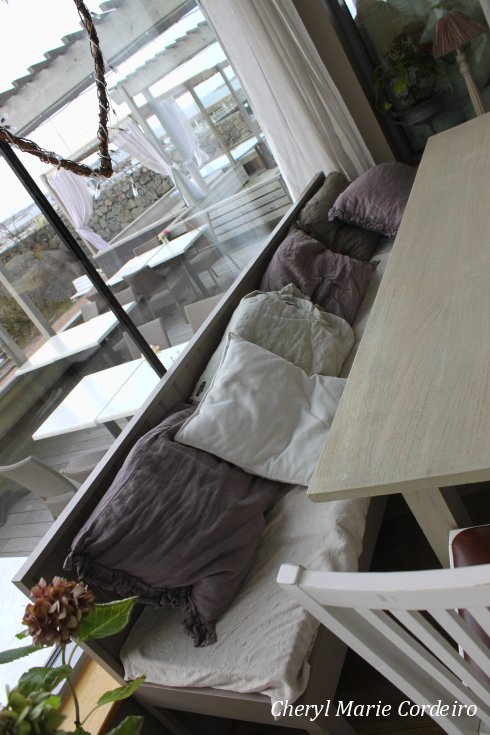
At the far end corner of the restaurant a country chic table, set with purples and greys reflects the colors of the water and ice polished rocks that surround the grounds of the restaurant. The connecting elements outside and in gives the place a relaxed atmosphere even at its busiest.
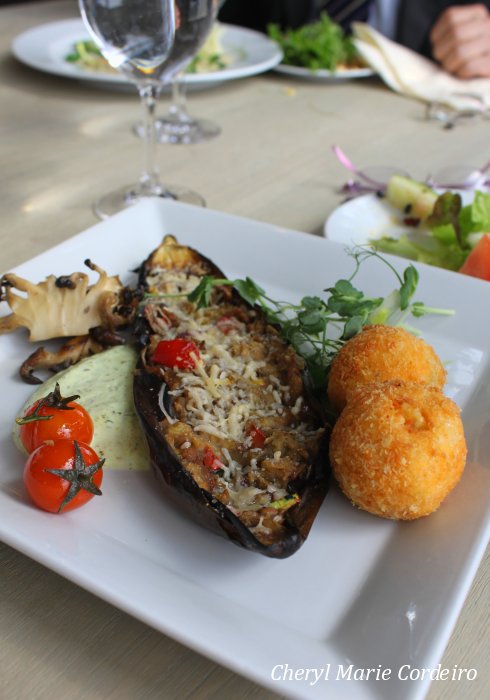
The menu has a vegetarian alternative and for this particular day, it was grilled aubergine.
The restaurant menu caters to both adults and children, bearing in mind a wide variety of dietary needs. At any lunch hour during the week, there’s a basket of full flavoured breads and butters du jour to choose from that complements the types of breads served and the salad bar.
Being a harbour city, Gothenburg itself is generally well known for seafood and fish dishes, and in this restaurant, there are the favourite fish dishes of cod and halibut cooked in a variety of ways depending on the day. There are also the meat dishes, from chicken to veal, and in well rounded presentation, there is the daily vegetarian option that you’ll need to serendipitously inquire after.
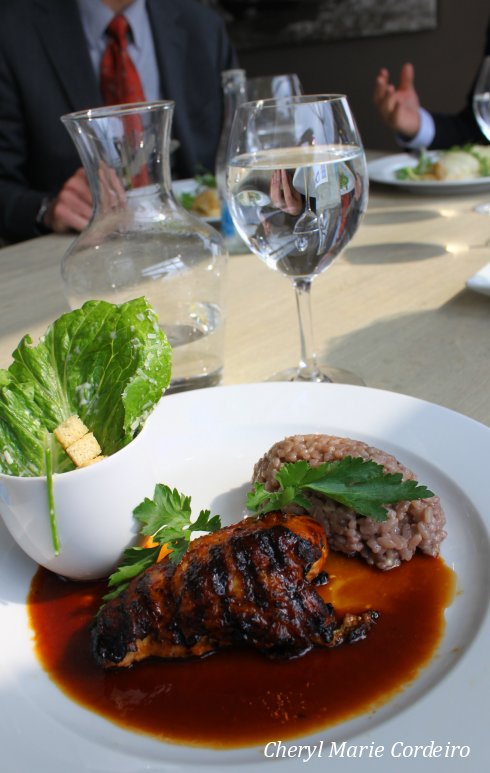
Grilled chicken and Risotto al Vino Rosso with Parmigiano Reggiano.
The restaurant can get quite crowded and its advisable to make a booking for a table if you’re headed that way, especially during the summer months in Sweden.
Swedish work and dining spaces both in Sweden and outside of Sweden are very often designed in such a way that they fundamentally encourage creativity. Interior living and dining is not just a concrete and tangible exploration of possibilities – as a child would explore their surroundings by touch and feel – but an abstract exploration of the mind, of potentials in a context that buoys the spirit of innovation.
To me this particular restaurant is in many ways the optimal place to invite guests to celebrate the open mindedness and congenial possibilities of international trade and scientific cooperation. For our purpose, it was a brilliant setting for a lunch with a small group of friends just arriving from Shanghai.